Horse News
Member
Horses of Many Colors
Black, white, and brown, oh my! With so many different colors of horses, it can be hard to keep them all straight. Good news: we’ve got you covered.
In a nut shell, horse coat colors are due to two pigments, black and red. These combine to form four main coat colors: black, gray, bay, and chestnut. The mixing (or lack) of pigments creates a wide range of coat colors. Some colors, like Paint and Appaloosa, are also horse breeds. Horses can also have a range of black points (manes, tails, socks, stockings) and white markings, like stars or stripes.
What Are Common Horse Colors?
Combinations of two pigments (or the lack of them)—red and black—result in four main coat colors: bay, black, chestnut, and gray. The rest of the colors are variations of these four and depend on how a gene is presented in a particular horse.
Color Basics
Chestnut
A chestnut is a red horse. The color can be dark or light, and chestnuts don’t have any black points.
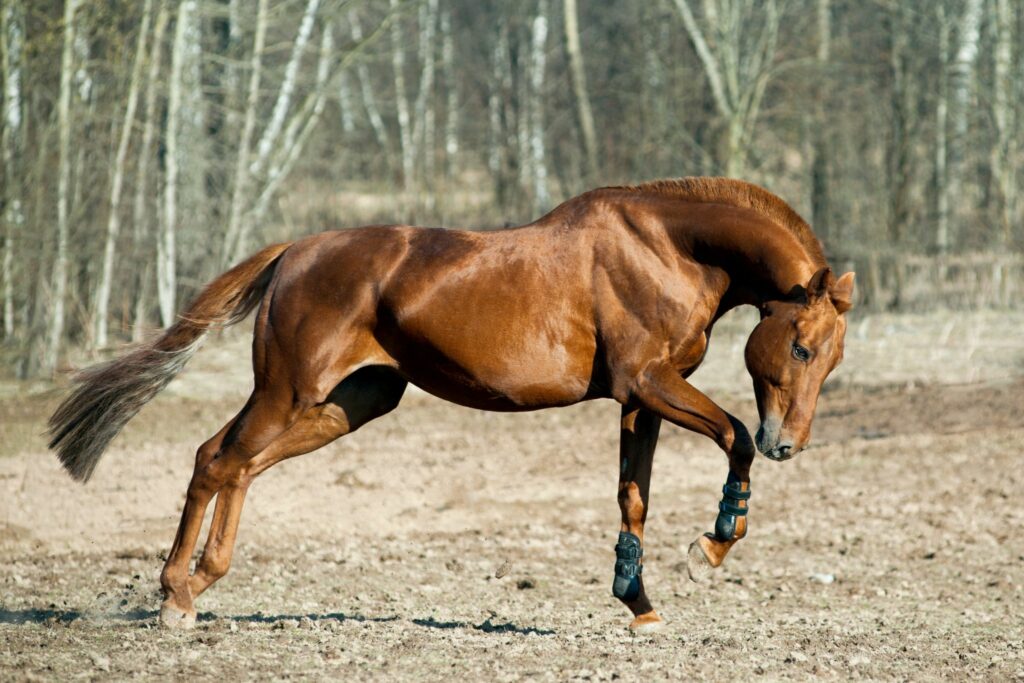
Chestnut. Photo Cred: Canva
Bay
One of the most common colors, a bay horse has a brown or reddish-brown coat with black points (like black manes, tales, or legs).

Bay. Photo Cred: Canva
Dapple Gray
A dapple gray has a gray coat with white marks splashed across the coat (usually circles/raindrops).
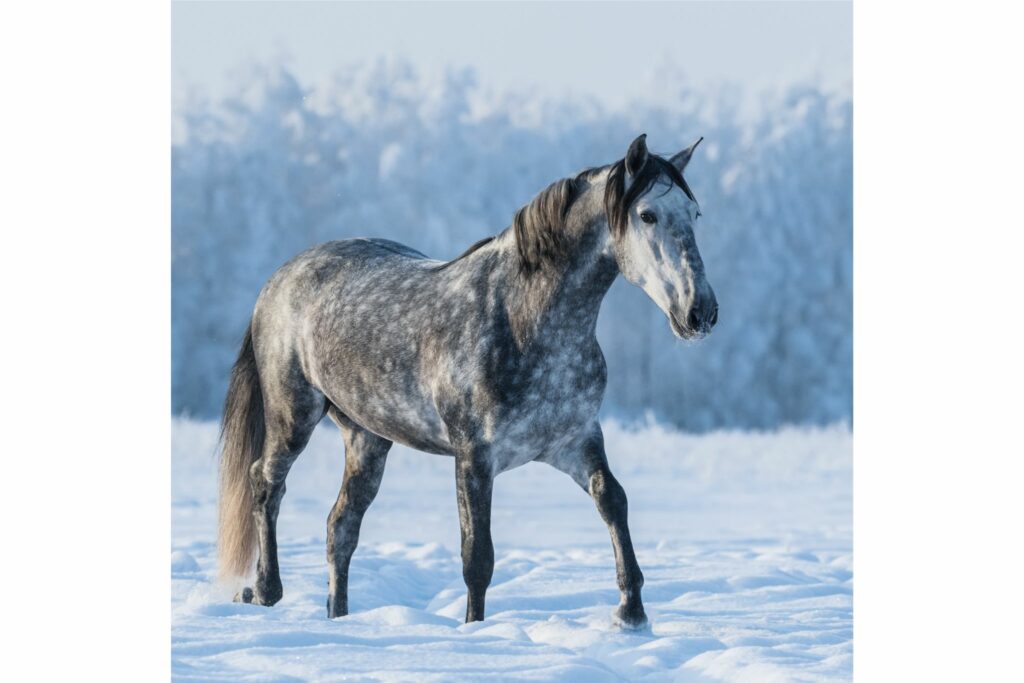
Dapple Gray. Photo Cred: Canva
Flea-bitten Gray
Flea-bitten grays have a white coat speckled with gray dots/freckles.
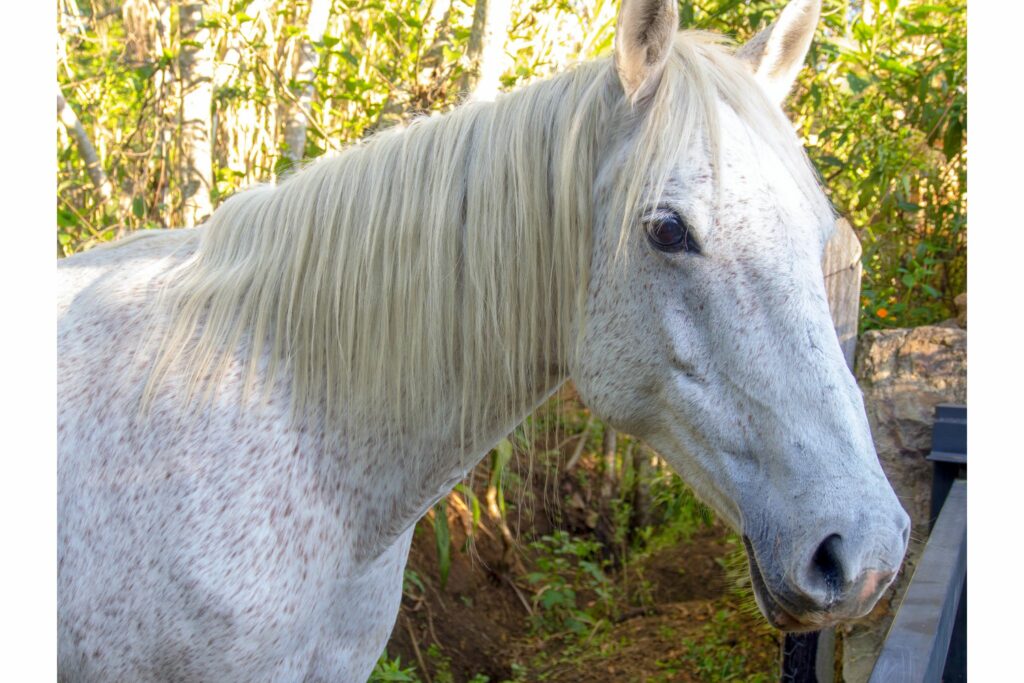
Fleabitten Gray. Photo Cred: Canva
Buckskin
Often confused with dun, a buckskin is a yellow/gray with dark points (mane, tail, legs).
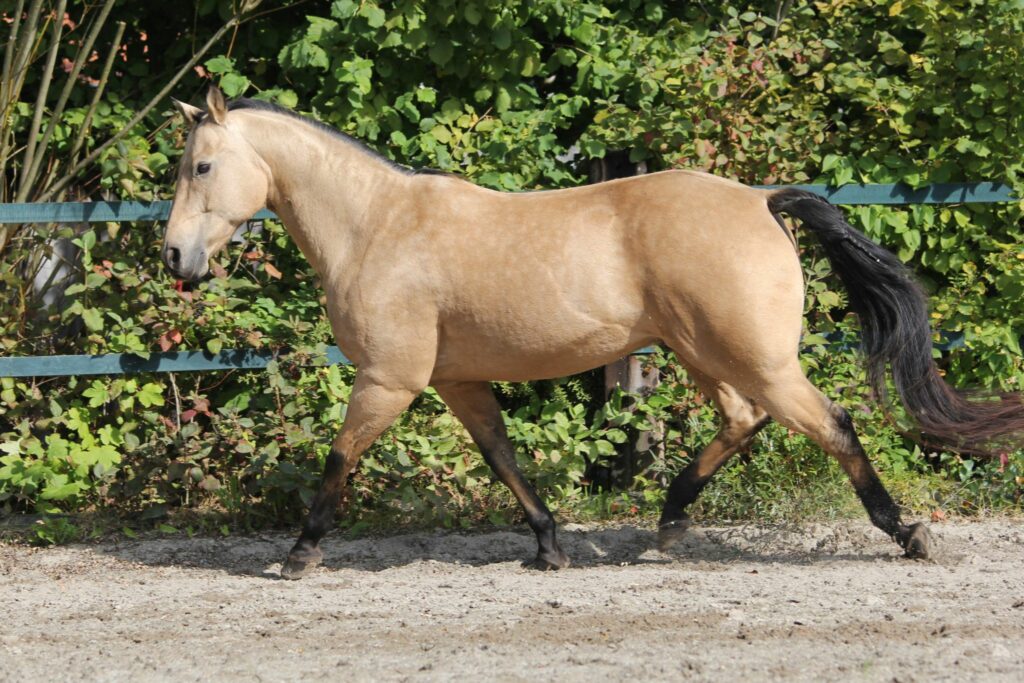
Buckskin. Photo Cred: Canva
Dun
Sometimes confused with buckskin, duns are also yellow/gray, but with more red. And they have a dorsal stripe which runs from the withers to the tail.

Dun. Photo Cred: Canva
Palomino
Palominos have a golden coat with white manes and tails.
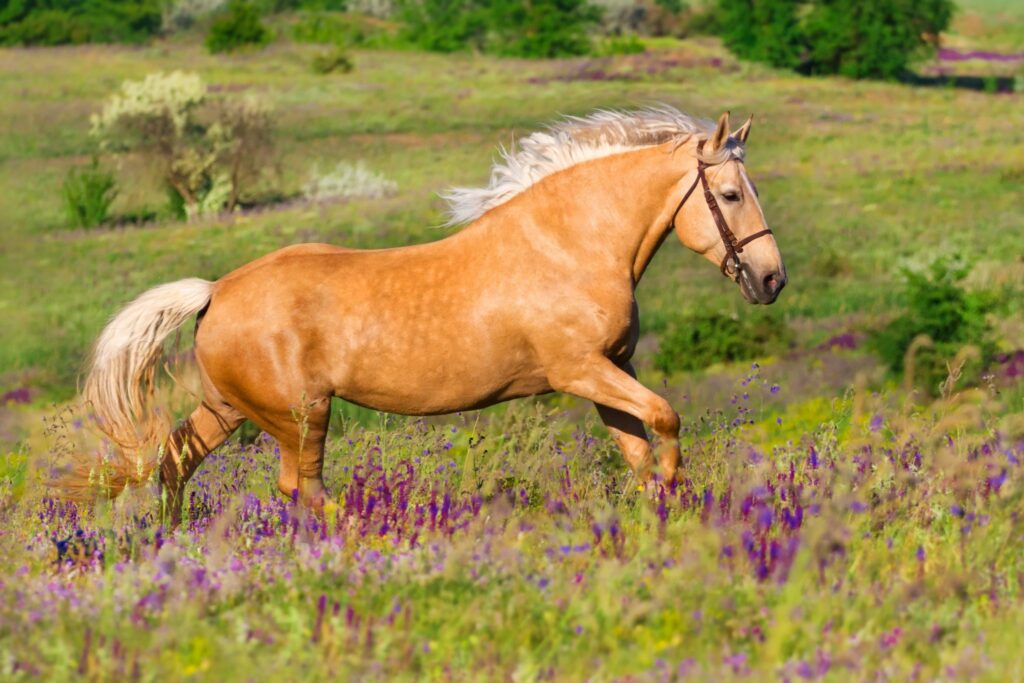
Palomino. Photo Cred: Canva
Brown
A brown horse has a brown mane and tail with no black points (usually chocolate in color).
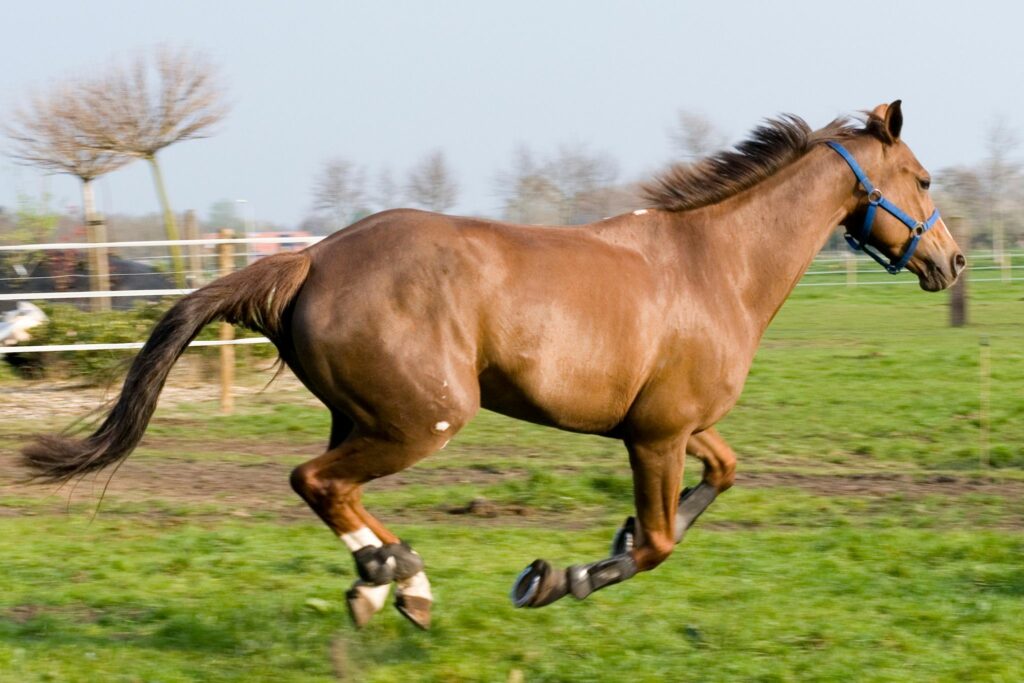
Brown. Photo Cred: Canva
Sorrel
A sorrel horse is yellow/reddish in color, usually light, sometimes with a blonde mane or tail.
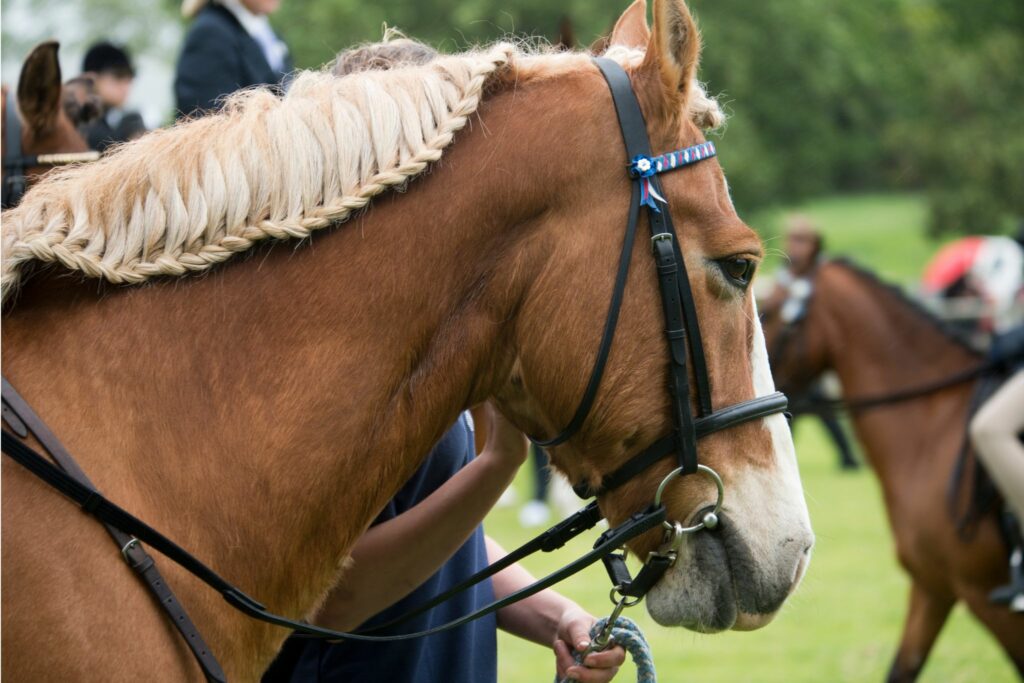
Sorrel. Photo Cred: Canva
Liver Chestnut
A very dark chestnut color with reddish manes and tails (sometimes confused with a brown horse).
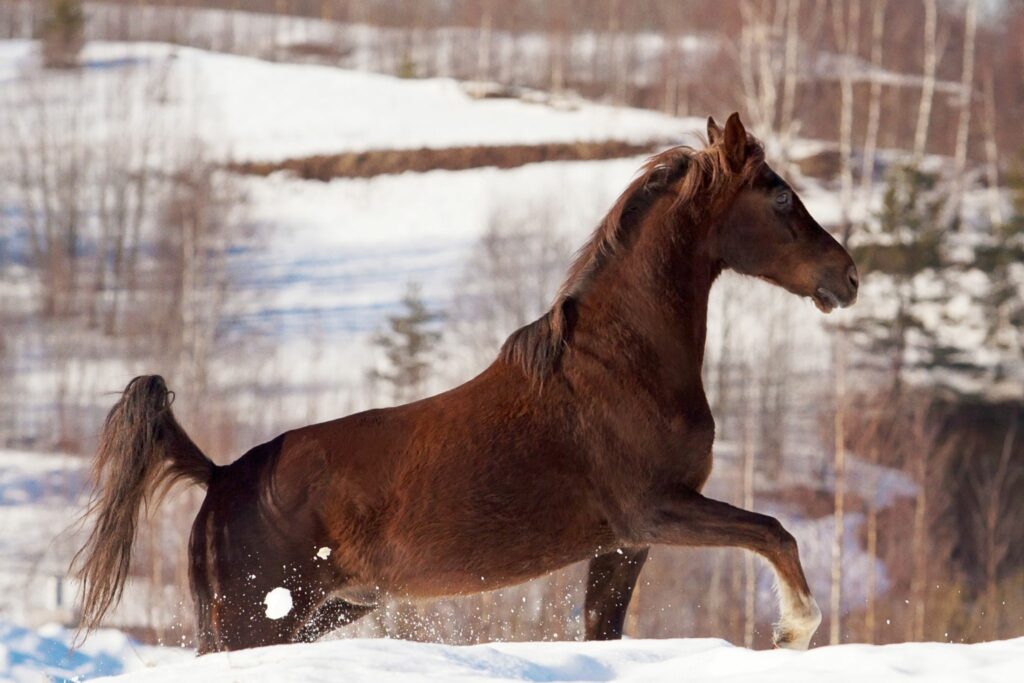
Source: Canva
Black
Black horses are all black (coat + points). Some may have white markings (like stars or socks).
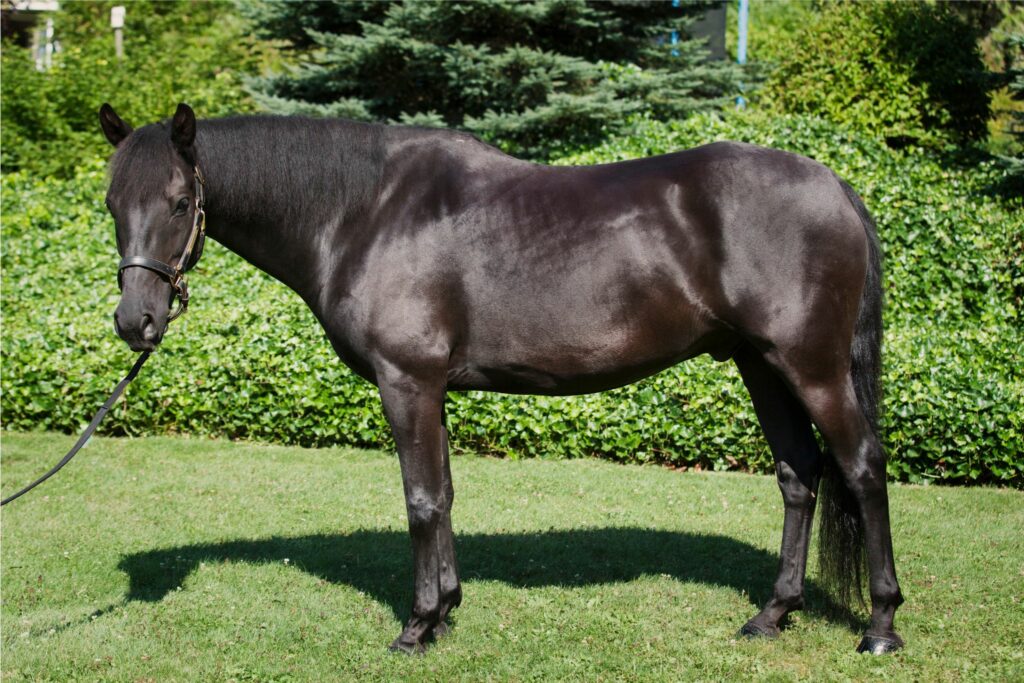
Black. Photo Cred: Canva
White
A true white horse has a white coat with pink skin and brown or blue eyes.
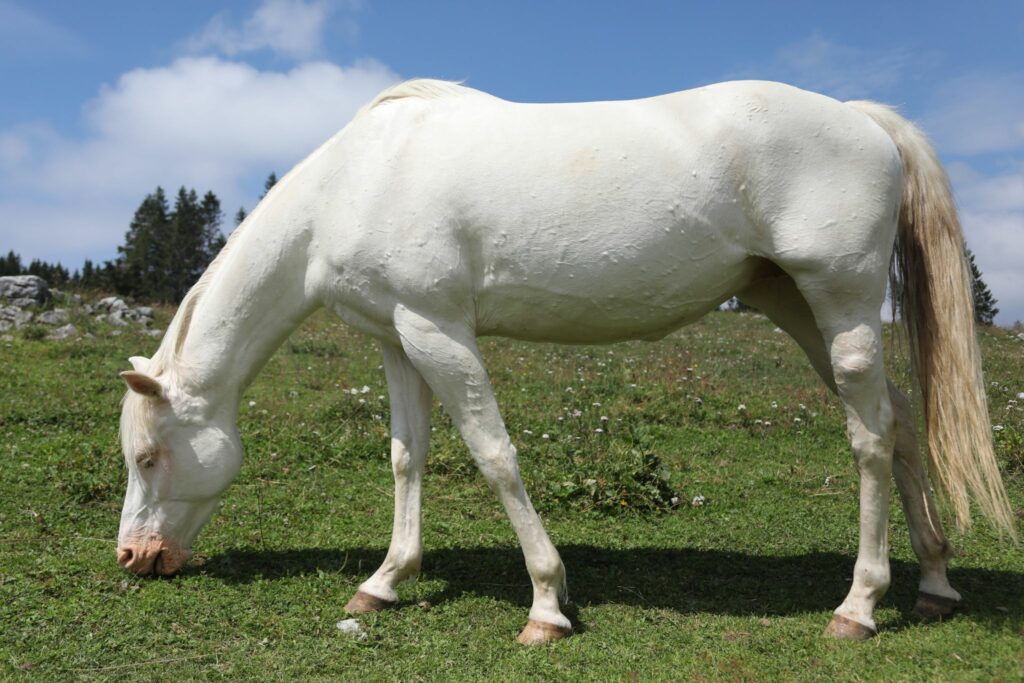
White. Photo Cred: Canva
Perlino/Cremello
Perlinos and cremellos have very pale coats (usually cream or champagne) with amber or blue eyes.
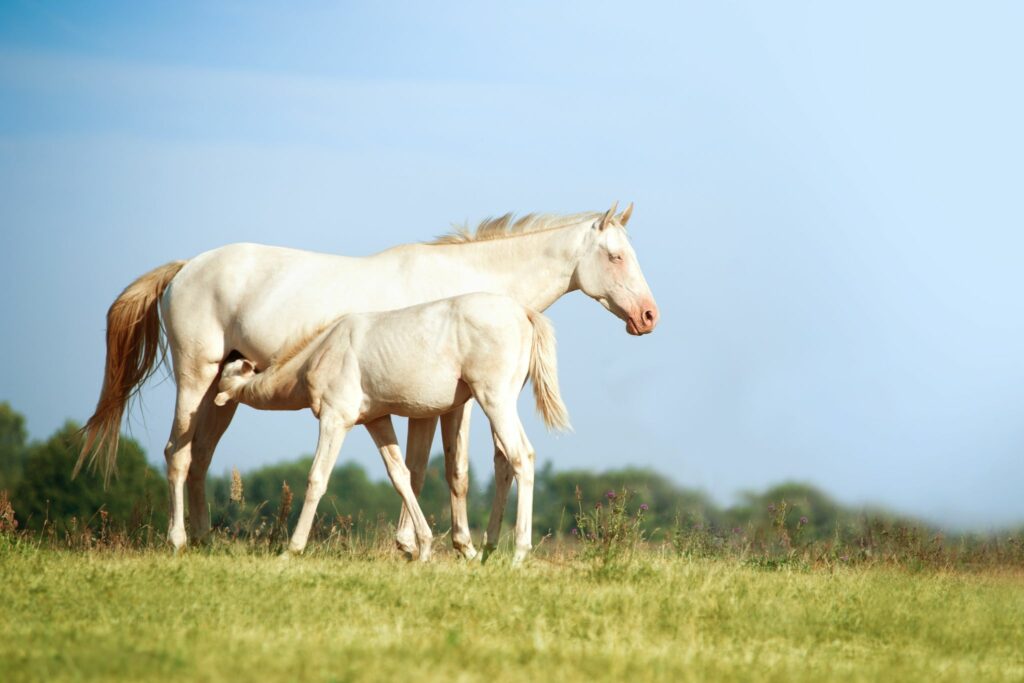
Perlino. Photo Cred: Canva
Grullo
A grullo coloring comes from dun coloring laid over black. The coat is a light mousy color mixed with dark points and sometimes a dorsal stripe.
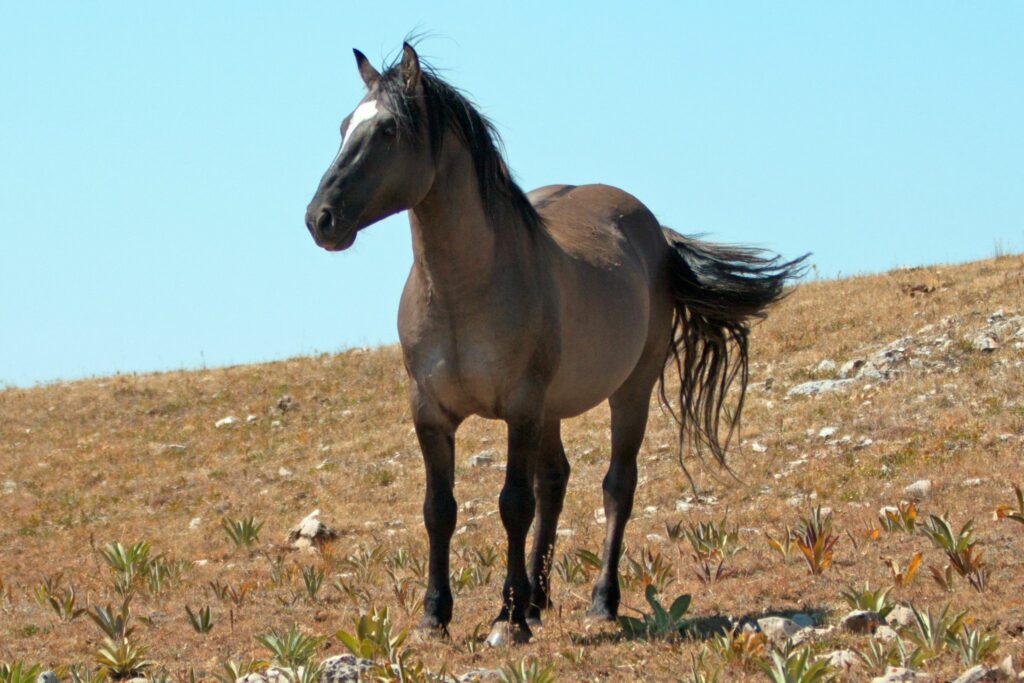
Grullo. Photo Cred: Canva
Roan (Blue, Strawberry)
A blue, red, or strawberry roan has a dark coat with individual white hairs interspersed throughout. Blue = white with black, red = white with brown, and strawberry = white with red.

Blue Roan. Photo Cred: Canva
Paint Coat Patterns
Paints have three main patterns with a couple of different expressions.
Overo
Distinguished by one blue eye, overos have white markings on their heads, legs, and underbellies.
Tobiano
A solid-colored head (sometimes with markings), with some white on their legs and over their backs. They usually have multicolored manes/tails.
Tovero
A tovero is a cross between an overo and a tobiano. They have more white on their faces and chests and, like overos, can have blue eyes.
Sabino
A type of overo, a sabino paint is solid in color and has at least two white feet. They also have white splashes on their flanks and a white blaze.
Splash
A type of overo, splash paints have white heads, blue eyes, and white markings on their legs and underbellies. Their backs are usually solid in color.
Appaloosa Coat Patterns
An Appaloosa coat pattern is distinct, with a base color mixed with a white spotting pattern (usually on the haunches).
Blanket
A blanket Appaloosa is white with spots over the hips paired with a different (contrasting) base color (for example, white and black).
Snowcap
A snowcap is almost identical to a blanket, but the white over the hips/haunches is pure white (no spotting).
Leopard
A leopard Appaloosa has a white coat with lots of black or brown dots speckled throughout (almost like polka dots).
Frost
A frosted Appaloosa is a cross between a roan and an appaloosa, with a solid-ish colored neck and chest and a roan-like pattern on the stomach and haunches.
White Markings
Lots of horses across all breeds and colors can have a range of white markings.
Star
A white patch on the forehead (can be small or large).
Snip
A small patch of pink or white on a nose or lip.
Stripe
A thin white mark (similar to a line) running down the face.
Bald Face
An all-white face due to lack of pigments, most common in Paint and pinto horses. Usually accompanied by one or two blue eyes.
Stocking
A longer, white sock that goes to the knee or hock.
Sock
White on the legs up to the ankle (very similar to an ankle sock for people).
Frequently Asked Questions
Q: What are horse colors called?
While there are dozens of specific colors, there are only four or five basic coat colors a horse can have: black, bay, brown, and chestnut (sometimes gray or dun is also included).
Q: What are the three types of paint horses?
Paint horses’ coats have three different patterns: Tovero, Overo, and Tobiano.
Q: What are the 5 basic horse coat colors?
The answer varies slightly, but the five coat colors are generally gray, black, bay, chestnut, and dun. Sometimes, sorrel or pinto is included in these five.
Q: What is a black, brown, and white horse called?
Most likely, the horse is either a Paint (which is a breed type that can have these three colors) or a pinto (a coat coloring that can occur in different breeds).
Q: What are the rarest horse colors?
Pure white is the rarest, but there are other colors not seen very often. Some include:
- Champagne
- Perlino
- Cremello
- Chocolate Palomino
- Liver Chestnut
- Silver Dapple
- Gray
- Brindle
Partings Thought
With the range of colors and patterns that horses come in, there’s something out there for everyone.
P.S. Enjoy this article? Trot on over to:
- How to Ride a Horse for Beginners (Basics, Safety, Mistakes)
- Horse Photography (Pro Tips, Settings, Editing, Examples)
- How Long Can Horses Lay Down?
- How Horses Sleep: A to Zzzz Guide to Equine Rest
- How Much Do Horses Cost & How You Can Actually Afford One
- I Want a Horse But Can’t Afford One. Now What?
The post 29 Horse Coat Color Variations (Beginner Photo Guide) appeared first on Horse Rookie.
Continue reading...
